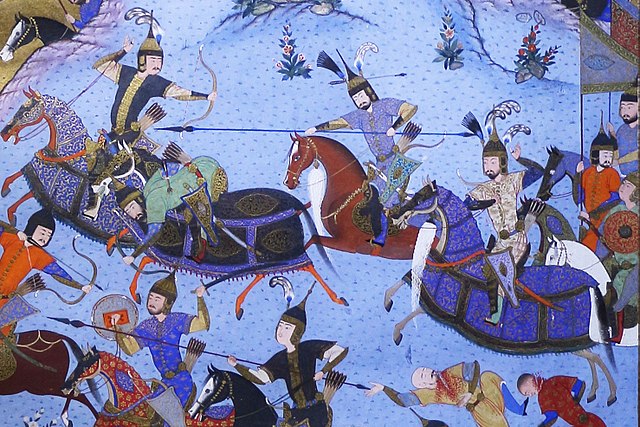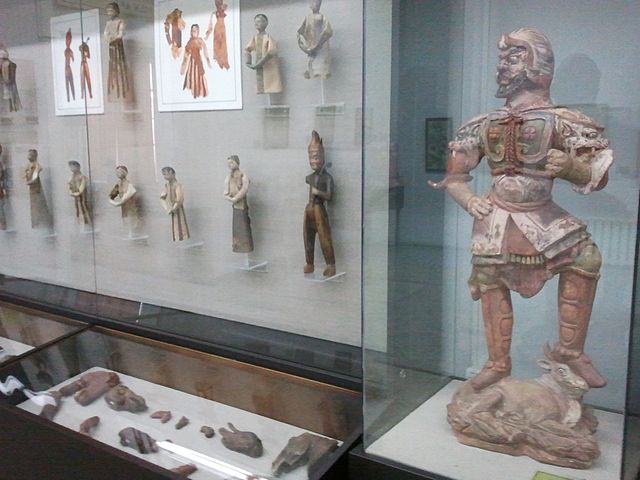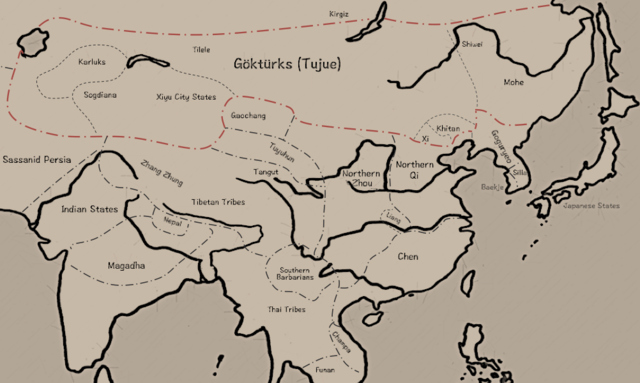
| FIRST TURKIC KHAGANATE First Turkic Khaganate : 552 – 603
Tamga of Ashina tribe
The Göktürk Khaganate at its greatest extent, in 576 Status
: Khaganate (Nomadic empire)
The First Turkic Khaganate (Romanized: Ïdï Oqsuz Kök Türük, lit. 'United Celestial Turks'; Chinese: pinyin: Tujué hánguó, also referred to as First Turkic Empire, Turkic Khaganate or Göktürk Khaganate), was a khaganate established by the Ashina clan of the Göktürks in medieval Inner Asia. Under the leadership of Bumin Qaghan (d. 552) and his brother Istämi. The First Turkic Khaganate succeeded Rouran Khaganate as the hegemonic power of the Mongolian Plateau and rapidly expanded their territories in Central Asia. Initially the Khaganate would use Sogdian in official and numismatic functions. Although the Göktürks spoke Old Turkic, the Khaganate's early official texts and coins were written in Sogdian. It was the first Turkic state to use the name Türk politically. Old Turkic script was invented at the first half of the 6th century.
It was the first Central Asian transcontinental empire from Manchuria to the Black Sea.
It collapsed in 603, after a series of conflicts and civil wars which separated the polity into the Eastern Turkic Khaganate and Western Turkic Khaganate. The Tang Empire conquered the Eastern Turkic Khaganate in 630 and the Western Turkic Khaganate in 657 in a series of military campaigns. The Second Turkic Khaganate emerged in 682 and lasted until 744 when it was overthrown by the Uyghur Khaganate.
First
Khaganate :
A disappointed Bumin allied with the Western Wei against the Rouran, their common enemy. In 552, Bumin defeated Anagui and his forces north of Huaihuang (modern Zhangjiakou, Hebei).
Having excelled both in battle and diplomacy, Bumin declared himself Illig Khagan of the new khanate at Otukan, but died a year later. His son, Muqan Qaghan, defeated the Hephthalite Empire, Khitan and Kyrgyz. Bumin's brother Istämi (d. 576) bore the title "Yabgu of the West" and collaborated with the Sassanid Empire of Iran to defeat and destroy the Hephthalites, who were allies of the Rouran. This war tightened the Ashina clan's grip on the Silk Road.
The appearance of the Pannonian Avars in the West has been interpreted as a nomadic faction fleeing the westward expansion of the Göktürks, although the specifics are a matter of irreconcilable debate given the lack of clear sources and chronology. Rene Grousset links the Avars with the downfall of the Hephthalites rather than the Rouran, while Denis Sinor argues that Rouran-Avar identification is "repeated from article to article, from book to book with no shred of evidence to support it".
Istämi's policy of western expansion brought the Göktürks into Europe. In 576 the Göktürks crossed the Kerch Strait into the Crimea. Five years later they laid siege to Chersonesus; their cavalry kept roaming the steppes of Crimea until 590. As for the southern borders, they were drawn south of the Amu Darya, bringing the Ashina into conflict with their former allies, the Sasanian Empire. Much of Bactria (including Balkh) remained a dependency of the Ashina until the end of the century.
Kizil city
Göktürk petroglyphs from Mongolia (6th to 8th century)
The First Turkic Khaganate Relation
with the Byzantine Empire :
Civil war :
Göktürk civil war :
The khaganate in 552 after its division into Western Turkic Khaganate and Eastern Turkic Khaganate
Gokturk khaganates at their height, c. 600 AD
The Turkic Khanate split in two after the death of the fourth ruler, Taspar Qaghan, c. 584. He had willed the title of khagan to Muqan's son Apa Qaghan, but the high council appointed Ishbara Qaghan instead. Factions formed around both leaders. Before long, four rivals claimed the title. They were successfully played off against each other by Sui and Tang China.[citation needed]
The most serious contender was the western one, Istämi's son Tardu, a violent and ambitious man who had already declared himself independent from the Qaghan after his father's death. He now seized the title and led an army east to claim the seat of imperial power, Otukan.[citation needed]
In order to buttress his position, Ishbara of the Eastern Khaganate applied to Emperor Yang of Sui for protection. Tardu attacked Chang'an, the Sui capital, around 600, demanding Emperor Yangdi end his interference in the civil war. In retaliation, Chinese diplomacy successfully incited a revolt of Tardu's Tiele vassals, which led to the end of Tardu's reign in 603. Among the dissident tribes were the Uyghurs and Xueyantuo.[citation needed]
Eastern Turkic Khaganate :
Shoroon Bumbagar tomb mural, Göktürk, 7th century CE, Mongolia The civil war left the empire divided into eastern and western parts. The eastern part, still ruled from Otukan, remained in the orbit of the Sui and retained the name Göktürk. The Shibi Khan (609–619) and Illig Qaghan (620–630) attacked China at its weakest moment during the transition between the Sui and Tang. Shibi Khan's surprise attack against Yanmen Commandery during an imperial tour of the northern frontier almost captured Emperor Yang, but his Chinese wife Princess Yicheng—who had been well treated by Empress Xiao during an earlier visit—sent a warning ahead, allowing the emperor and empress time to flee to the commandery seat at present-day Daixian in Shanxi. This was besieged by the Turkish army on September 11, 615, but Chinese reinforcements and a false report from Princess Yicheng to her husband about a northern attack on the khaganate caused him to lift the siege before its completion.
In 626, Illig Qaghan took advantage of the Xuanwu Gate Incident and drove on to Chang'an. On September 23, 626, Illig Qaghan and his iron cavalry reached the bank of the Wei River north of Bian Bridge (in present-day Xianyang, Shaanxi). On September 25, 626, Li Shimin (later Emperor Taizong of Tang) and Illig Qaghan formed an alliance by sacrificing a white horse on Bian Bridge. The Tang paid compensation and promised further tribute, so Illig Qaghan ordered his iron cavalry to withdraw. This is known as the Alliance of the Wei River, or the Alliance of Bian Qiao. All in all, 67 incursions on Chinese territories were recorded.
Before mid-October 627, heavy snows on the Mongolian-Manchurian grassland covered the ground to a depth of several feet, preventing the nomads' livestock from grazing and causing a massive die-off among the animals. According to the New Book of Tang, in 628, Taizong mentioned that "There has been a frost in midsummer. The sun had risen from same place for five days. The moon had had the same light level for three days. The field was filled with red atmosphere (dust storm)."
Illig Qaghan was brought down by a revolt of his Tiele vassal tribes (626–630), allied with Emperor Taizong of Tang. This tribal alliance figures in Chinese records as the Huihe (Uyghur).
On March 27, 630, a Tang army under the command of Li Jing defeated the Eastern Turkic Khaganate under the command of Illig Qaghan at the Battle of Yinshan. Illig Qaghan fled to Ishbara Shad, but on May 2, 630 Zhang Baoxiang's army advanced to Ishbara Shad's headquarters. Illig Qaghan was taken prisoner and sent to Chang'an. The Eastern Turkic Khaganate collapsed and was incorporated into the Jimi system of Tang. Emperor Taizong said, "It's enough for me to compensate my dishonor at Wei River."
Western Turkic Khaganate :
Western Turkish officers during an audience with king Varkhuman of Samarkand. 648 - 651 CE, Afrasiyab murals, Samarkand The Western khagan Sheguy and Tong Yabghu Qaghan constructed an alliance with the Byzantine Empire against the Sasanian Empire and succeeded in restoring the southern borders along the Tarim and Amu Darya rivers. Their capital was Suyab in the Chu River valley, about 6 km south east of modern Tokmok. In 627 Tung Yabghu, assisted by the Khazars and Emperor Heraclius, launched a massive invasion of Transcaucasia which culminated in the taking of Derbent and Tbilisi (see the Third Perso-Turkic War for details). In April 630 Tung's deputy Böri Shad sent the Göktürk cavalry to invade Armenia, where his general Chorpan Tarkhan succeeded in routing a large Persian force. Tung Yabghu's murder in 630 forced the Göktürks to evacuate Transcaucasia.[citation needed]
Western Turkic Khaganate was modernized through an administrative reform of Ashina clan (reigned 634–639) and came to be known as the Onoq. The name refers to the "ten arrows" that were granted by the khagan to ten leaders (shads) of its two constituent tribal confederations, the Duolu (five churs) and Nushibi (five irkins), whose lands were divided by the Chui River. The division fostered the growth of separatist tendencies. Soon, chieftain Kubrat of the Dulo clan, whose relation ship with the Duolu is possible but not proven, seceded from the Khaganate. The Tang dynasty campaigned against the khaganate and its vassals, the oasis states of the Tarim Basin. The Tang campaign against Karakhoja in 640 led to the retreat of the Western Turks, who were defeated during the Tang campaigns against Karasahr in 644 and the Tang campaign against Kucha in 648, leading to the 657 conquest of the Western Turks by the Tang general Su Dingfang. Emperor Taizong of Tang was proclaimed Khagan of the Göktürks.
In 657, the emperor of China could impose indirect rule along the Silk Road as far as Iran. He installed two khagans to rule the ten arrows (tribes) of Göktürks. Five arrows of Tulu were ruled by khagans bearing the title of Xingxiwang while five arrows of Nushipi were ruled by Jiwangjue. Five Tulu corresponded to the area east of Lake Balkash while five arrows of Nushipi corresponded to the land east of the Aral Sea. Göktürks now carried Chinese titles and fought by their side in their wars. The era spanning from 657–699 in the steppes was characterized by numerous rulers – weak, divided, and engaged in constant petty wars under the Anxi Protectorate until the rise of Turgesh.
Customs
and culture :
Religion
:
Culinary :
A fresh ayran According to Nevin Halici, ayran is a traditional Turkic drink that was consumed by nomadic Turks prior to 1000 CE. According to Celalettin Koçak and Yahya Kemal Avsar (Professor of Food Engineering at Mustafa Kemal University), ayran was first developed thousands of years ago by the Göktürks, who would dilute bitter yogurt with water in an attempt to improve its flavor.
Gallery :
Statue of Niri Qaghan, Xinjiang, China
Shahnameh illustration of Bahram Chobin fighting Bagha Qaghan
Shahnameh illustration of Bahram Chobin and Bagha Qaghan fighting
Ceramic figures of the Göktürks from the Tang Dynasty period, Mongolia (7th century)
Map of the First Turkic kaganate circa 570 Source :
https://en.wikipedia.org/ |
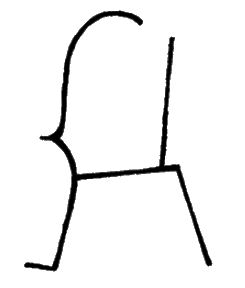
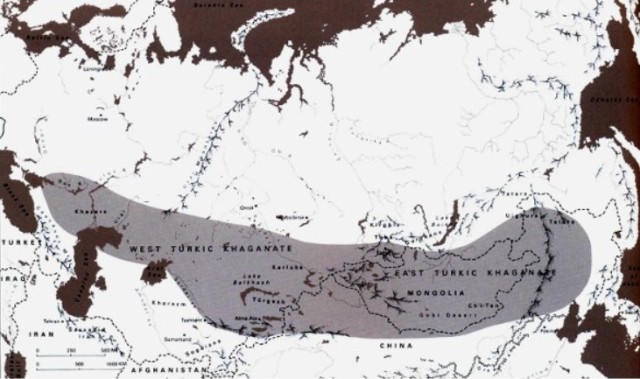
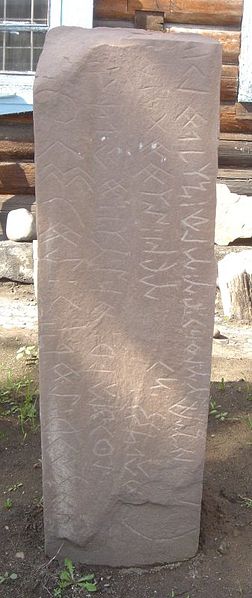
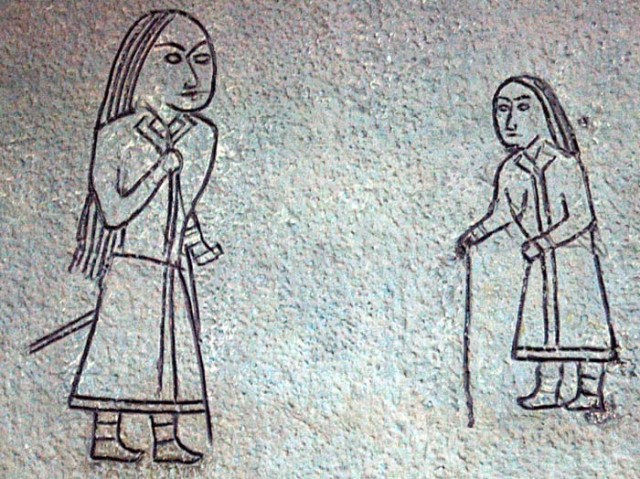
.jpg)
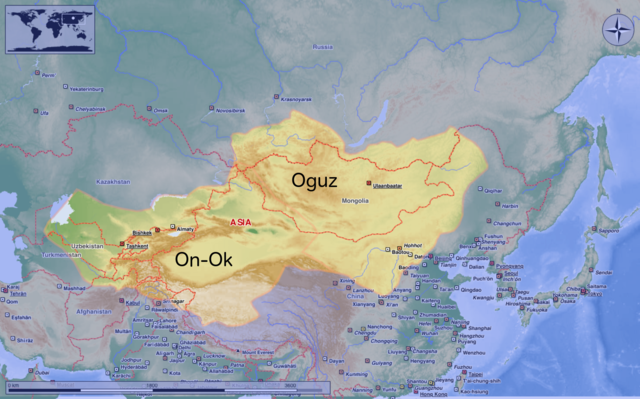
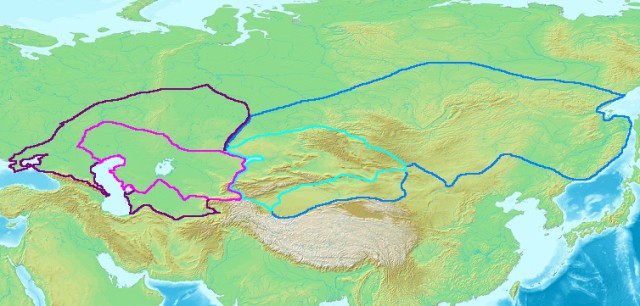
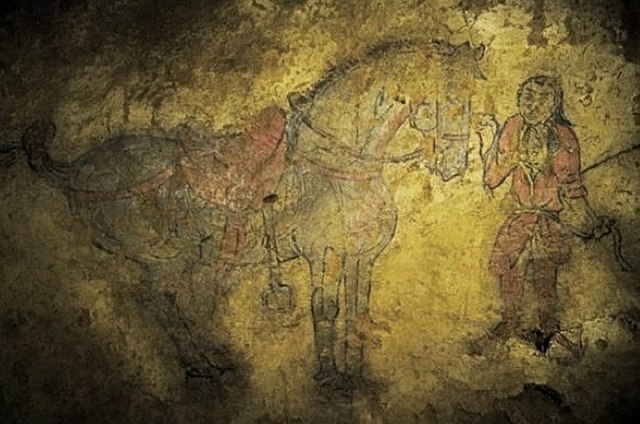
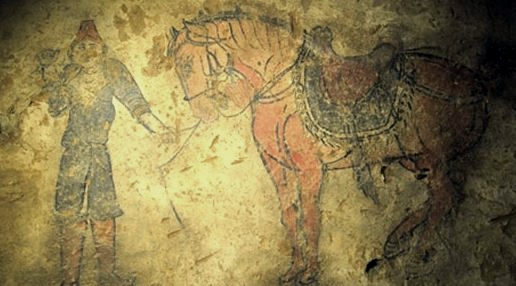
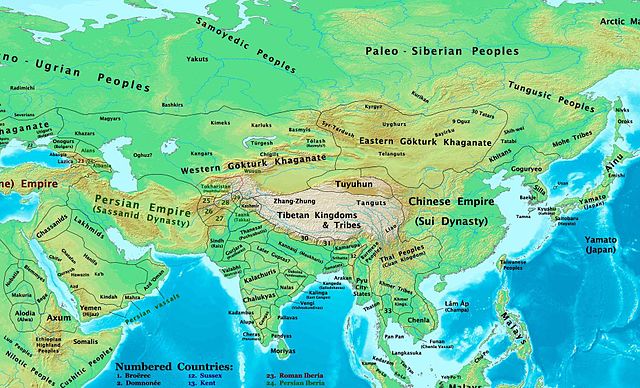
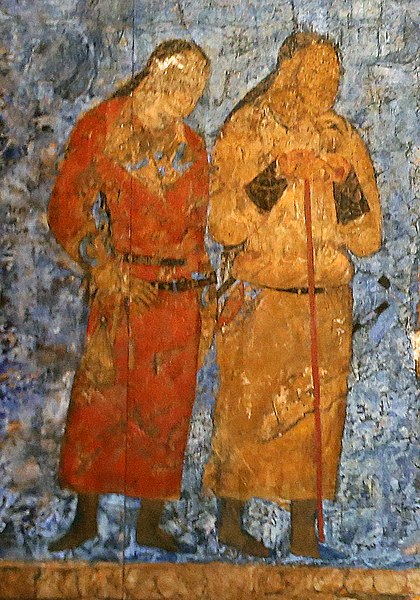
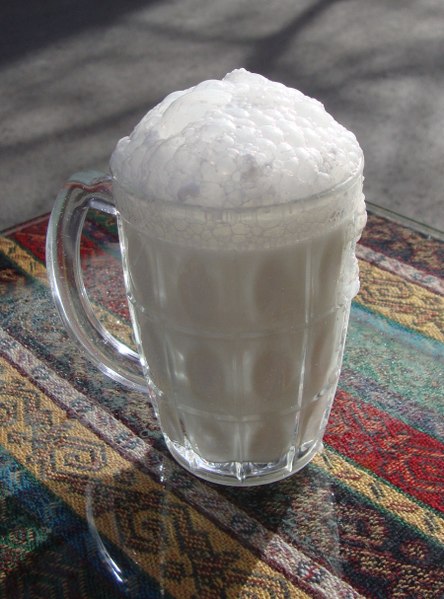
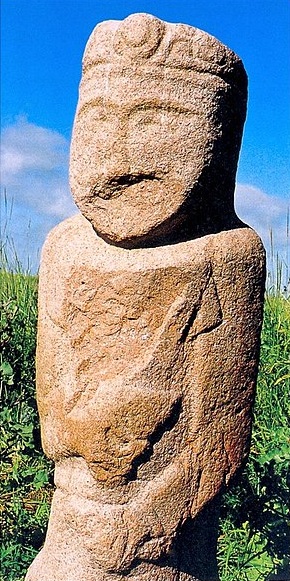
.jpg)
